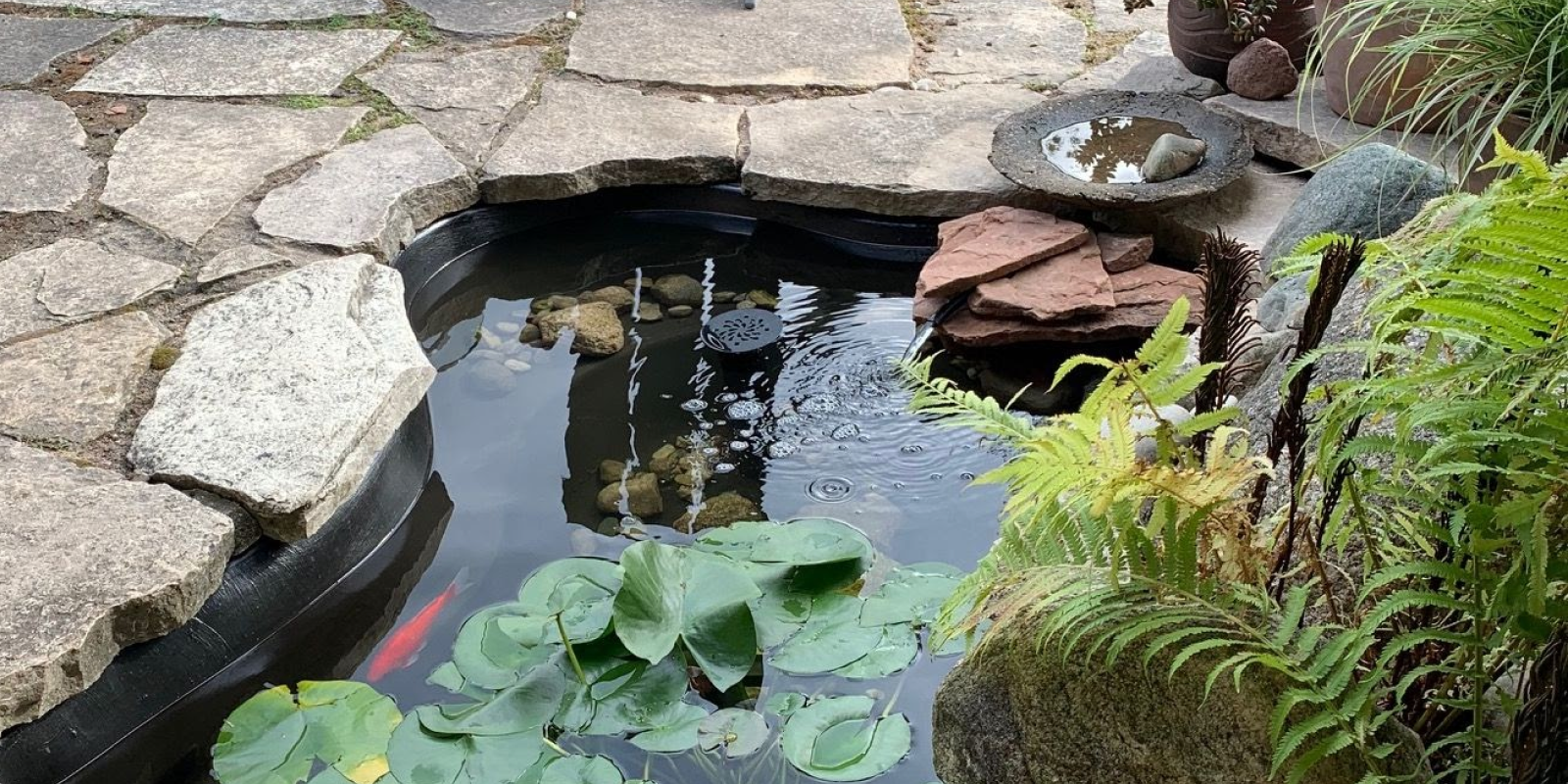A pond makes a lovely, eye-catching centerpiece for your outdoor landscaping, whether you're growing lily pads and water flowers or housing ornamental fish like Koi. Surrounded by beautiful plants, decorative stone paths, and tasteful landscape lighting, outdoor water features can bring life to your backyard and joy to homeowners and guests.
Unfortunately, these beautiful ponds are also prone to leaks. If you’re constantly having to refill the pond or notice that the surrounding area is soft or partly submerged, you likely have a leak in your pond. But repairing and replacing leaks can be a relatively simple DIY fix with the help of Liquid Rubber Neopond Sealant. Learn how to seal a pond like a pro with our easy-to-follow instructions.
Common Causes of Pond Leaks
There are several reasons that ponds leak, and when you determine the cause or causes of your pond leak, you can properly repair it yourself and take steps to prevent future leaks. If, however, you aren't entirely sure where the leak is, or if you notice that soft spots in your lawn are leading away from your pond, you may have a leaking pipe that may require a plumber.
Here are some signs that your pond itself has a leak:
- Cracks or holes in the materials of the pond
- Deterioration of the pond liner due to erosion
- Incursions from tree roots or damage from burrowing animals
- Poorly constructed pond
- Failed pond repairs
Many pond leak causes can be fixed, but it's important to find all of them before you start resealing the pond. If tree roots cause leaks, you may wish to hire a professional landscaper or arborist to remove or replant the tree. Leaks caused by animal damage may require a professional exterminator or pest control service before fixing the leak.

How to Seal a Pond To Repair and Prevent Leaks
Liquid Rubber's Neopond Sealant is an easy-to-apply complete pond sealant that preserves all the construction materials of your pond and protects your water feature from leaks.
Here is a complete guide for prepping, coating, and finishing your pond:
- Remove plants and fish. Rehome fish in the water from your pond to avoid the animals going into shock. You can also place your plants in a separate container of pond water.
- Drain the remaining water and discard. You may choose to test the water for toxins and contaminants that may have gotten in from the leak. If you note the presence of something dangerous, you may want to have your fish and plants checked by a professional before replacing them in the pond.
- Discard the mulm on the bottom of the pond.
- Remove any previous patch repairs made with silicone or similar materials. You can use acetone for EPDM pond liners.
- Pressure-wash all surfaces to clean them. This includes the pond deck area as well as the basin. To remove tough stains, there are a few things you can use depending on the material. For concrete, use concrete etch. and for wood, use Liquid Rubber Deck Cleaner.
- Dry surfaces thoroughly. If the surfaces are especially porous, like wood, you may need at least 24-48hrs to ensure all the moisture has evaporated.
- Use Liquid Rubber Seam Tape where needed over cracks or seams to create a tight seal.
- Use Liquid Rubber EPDM Primer for EPDM liners, after cleaning with acetone. Use Liquid Rubber Multi-Purpose Primer for other surfaces like concrete, wood or PVC.
- Apply Liquid Rubber Neopond Sealant with a brush, roller, or sprayer. Make sure to cover and avoid any parts of the pond and surrounding landscape that you don't want to apply the product to.
- Apply 3-4 generous coats, allowing 4-6 hours to dry between coats.
- Allow the final membrane to dry for 3-5 days before filling.
- Fill the pond with water.
- Wait for 24 to 48 hours to check for leaks. If you notice leaks, drain the pond and conduct another inspection, then repeat the sealing process.
- Use a water conditioner to adjust the pond to the correct pH.
- Reinstall plants once the water is ready.
- Allow fish to float in water bags for one hour to acclimate to the temperature
- Release fish back into the pond.
Additional Tips To Make Your Pond Project Successful
A beautiful, leak-free pond is the centerpiece of your outdoor landscaping. In addition to the easy-to-follow instructions above, we've also included some tips to ensure that your project is successful:
- Repair holes and cracks with Liquid Rubber Seam Tape.
- Seal gaps around hose openings or submerged pond equipment.
- Repair rips and tears in the pond liner.
- Use Multi-Purpose Primer for superior adhesion on non-rubber surfaces.
- Apply when temperatures are above 10C or 50F. Avoid direct sunlight and excessive moisture or humidity.
Because you need at least three to four coats of the Liquid Rubber Neopond Sealant, and because the membrane takes at least three to five days to cure, it's essential to check the long-term weather forecast for your area to ensure that no unexpected storms damage your pond sealant.
Let's Get Started!
Your pond can be a beautiful centerpiece of your outdoor landscaping, adding a peaceful and eye-catching feature to the space. To keep your pond a thing of beauty for years, it's essential to use the right kind of materials and quality sealants to prevent leaks.
The Liquid Rubber family of products is ideal for your outdoor pond project. Developed with functionality and ease of application in mind, they’re created to be non toxic for plants, fish, and people. Liquid Rubber Neopond Sealant is solvent-free, easy to apply, and built to protect your pond for years to come.




